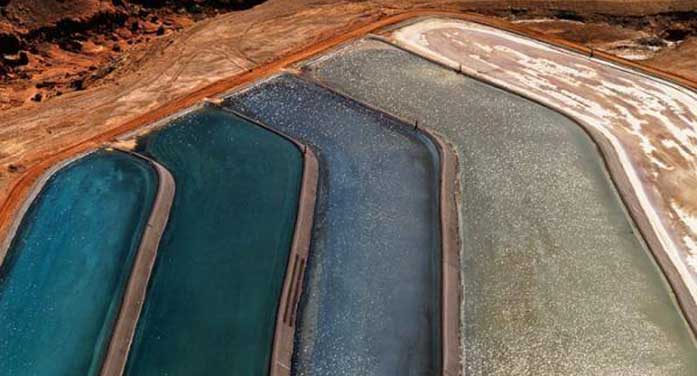 New technologies and practices are improving the environmental performance of Canada’s oil sands industry, with producers removing more than 270 million cubic metres of “legacy tailings” from the environment over the last five years.
New technologies and practices are improving the environmental performance of Canada’s oil sands industry, with producers removing more than 270 million cubic metres of “legacy tailings” from the environment over the last five years.
The successful reduction of legacy tailings – tailings that were in storage before 2015 – is contributing to a slower pace of growth for total oil sands tailings, despite record production.
Tailings are a byproduct of mining operations around the world. In the oil sands, tailings are a mixture of sand, silt, clay, water and residual bitumen produced in the mining extraction process.
The engineered basins or tailings ponds that hold the material also help oil sands projects recycle water for their operations – up to 85 per cent of the water used is recycled through this process, according to Canada’s Oil Sands Innovation Alliance (COSIA).
| RELATED CONTENT |
| The flap over tailings pond bird deaths lacks perspective By Brett Wison |
| Alberta’s success in reducing emissions Webinar with Eddie Isaacs |
| For the first time, oil sands on path to total emissions reduction: report By Deborah Jaremko |
But decades of operations, increasing oil sands production, technological challenges and the regulatory requirement to store untreated process-affected water have contributed to a large accumulation of tailings in Alberta.
Finding the right suite of technologies to address the challenge is the main area of focus for research and development efforts, with producers investing more than $50 million on tailings research through COSIA each year.
In 2021, despite oil sands mining production reaching a record 1.59 million barrels per day, total oil sands tailings increased by 11.7 million cubic metres – the lowest amount of growth in the last five years, according to the latest project performance reports published by the Alberta Energy Regulator (AER).
In 2016, oil sands mining production averaged 1.1 million barrels per day, and total tailings grew by a substantially larger 59.6 million cubic metres.
Part of the success is attributable to the decrease in legacy tailings. Project data shows that oil sands mining producers reduced the total volume of legacy tailings to about 760 million cubic metres in 2021, from nearly 1,000 million cubic metres in 2016.
According to performance reports, all six mining projects with legacy tailings reduced those volumes in 2021.
Tailings management technologies include centrifuge facilities, CO2 injection, the addition of polymers, coagulants and thickeners, and water capping.
Suncor Energy’s Base Plant leads the reduction efforts, removing approximately 190 million cubic metres of legacy tailings since 2016, project data shows.
The work is so successful that total tailings – not just legacy tailings – at the facility are going down.
In 2021 Suncor’s Base Plant had 268 million cubic metres of total tailings in storage, a reduction of about 15 per cent from 2016 (317 million cubic metres), according to project data.
“Total inventories are shrinking, and we are ahead of regulatory requirements,” the company said in its 2021 Sustainability Report.
“Over the last 10 years, one pond has been surface reclaimed and two more are advancing to closure; one of those ponds is currently being drained, and we anticipate it being removed from the landscape this decade.”
Deborah Jaremko is director of content for the Canadian Energy Centre, an Alberta government corporation funded in part by taxes paid by industry on carbon emissions.
Deborah is a Troy Media Thought Leader. For interview requests, click here.
The opinions expressed by our columnists and contributors are theirs alone and do not inherently or expressly reflect the views of our publication.
© Troy Media
Troy Media is an editorial content provider to media outlets and its own hosted community news outlets across Canada.

